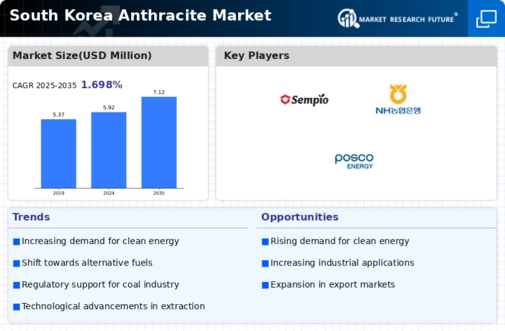The South Korea Anthracite Market reveals a landscape characterized by substantial competition and evolving dynamics driven by energy demands, technological advancements, and regulatory frameworks. The market is shaped by domestic production capabilities, import strategies, and efforts to embrace cleaner energy alternatives while maintaining economic viability. Companies operating within this sector must navigate a complex tapestry of environmental regulations, changing consumer preferences, and the availability of resources. There is a significant push towards increasing efficiency and reducing the carbon footprint, all while meeting the ever-growing energy requirements of industries and households in South Korea.
This competitive environment demands agility, strategic foresight, and an understanding of market trends to sustain growth and profitability.Korea Electric Power Corporation holds a formidable position in the South Korea Anthracite Market. The company is recognized for its robust ability to generate electricity, with a significant portion derived from anthracite coal. Its extensive infrastructure and operational efficiency are key strengths that enable it to meet the energy demands of the nation. Korea Electric Power Corporation has maintained a competitive edge through substantial investments in modern technologies that enhance energy production capabilities and reduce emissions.
Additionally, its centralized influence in the South Korean energy sector allows it to effectively integrate resources and streamline operations, thus solidifying its role as a key player in the anthracite market.Korea Power Exchange functions as a pivotal entity in the South Korea Anthracite Market by facilitating the trading and optimization of electricity generated from anthracite resources among various power producers. It serves as a critical hub for market operations, ensuring effective price formation and enabling efficient allocation of energy resources.
With key services such as electricity trading, balancing facilities, and market settlement, Korea Power Exchange plays a vital role in maintaining the operational stability and reliability of the power supply in South Korea. The organization has strengthened its market presence by enhancing its technological infrastructure and exploring strategic collaborations or partnerships with other market participants, which strategically positions it in an evolving energy landscape. Through its commitment to improving market mechanisms, the Korea Power Exchange exemplifies an understanding of the critical interplay between anthracite resources and the broader objectives of energy sustainability in South Korea.














Leave a Comment